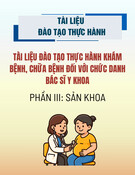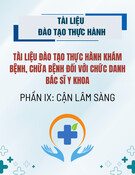
1 / 4
Evidence for Self-Medication © 2025 Wissenschaftliche Verlagsgesellschaft Stuttgart
Evidence for Self-Medication
International Review Journal
Evid Self Med 2025;5:250015 | https://doi.org/10.52778/efsm.25.0015
Affiliation/Correspondence: Dr Mira Jakobs (mira.jakobs@bayer.com) and Dr Christiane Kolb, Bayer Vital GmbH, Medical Affairs Consumer Health,
Building K 56, 1B072, 51366 Leverkusen, Germany
Self-medication in women with
androgenetic alopecia
Pharmacy practice and scientific evidence
Mira Jakobs and Christiane Kolb
Abstract: Androgenetic alopecia causes hair thinning in the vertex region, which may
significantly impair quality of life. A survey of 2,579 pharmacy employees highlights the
importance of self-medication for affected women. Nutritional supplements containing
amino acids and vitamins demonstrate favourable study results in vitro and in vivo.
Unexplained hair loss: an issue for self-medication
Pharmacies are often the first point of contact for patients
experiencing excessive hair loss. The aim of affected
individuals is to prevent further thinning of their scalp hair
and to optimally stimulate hair regrowth [1]. Recommending
an effective preparation, along with providing advice
regarding its use, expected side effects and duration of
treatment, is essential for long-term adherence, which
is necessary for an effective therapy. This is particularly
relevant for forms of hair loss that are permanent rather than
temporary, such as androgenetic alopecia (AGA).
A survey [2] highlights the importance of counselling for
patients with AGA, who are engaging in self-medication. A
total of 2,579 pharmacy employees participated in the survey,
with 2,559 completing it (1,292 pharmacists, 1,091 pharmacy
technicians, 94 pharmaceutical-commercial employees, 102
others).
Approximately half of the respondents (45.5%) reported that
their pharmacy receives enquiries about a treatment option
for excessive hair loss more than once a month to several
times a week. According to the survey, affected women are
on average over 40 years of age (36.9%) or, more specifically,
aged 50 to 70 years (38.7%). Only a few (1.2%) were older.
Asmaller proportion (23.3%) reported that the affected
women were younger than 40 years of age.
A lot of patients (85.9%) expressed a wish for advice
regarding self-medication. According to the assessment of
the participants, many patients had been made aware of a
specific product through the media (49.9%), while many
want to repurchase a tried and tested product (23.6%) or
are dissatisfied and want to try a new product (18.1%). Only
a small proportion (14.1%) reported that many patients
are already receiving medical treatment and are seeking a
supportive therapy from the pharmacy.
Most respondents (80.7%) typically recommend a product
and advise consulting a doctor if hair loss does not improve
within three months. A smaller proportion recommends a
product only in cases of very mild hair loss (11.1%) or always
advises the patients to consult a doctor because it is possible
that laboratory tests are needed (8.1%).
These figures are also reflected in the reported level of
knowledge among the surveyed pharmacy staff. 40.8% of
the participants reported that they are able to differentiate
between the various causes of hair loss, while 28.7% stated
that they could not and 30.7% did not provide a definitive
response. 36.5% were aware of the evidence supporting the
treatment, 28.3% were not aware of any scientific studies and
35.0% did not respond to the question. 8.0% stated that they
were unfamiliar with hair loss and therefore recommended a
consultation with a doctor.
The following causes were correctly attributed to AGA by the
respondents (multiple responses were permitted): hormonal
changes (81.6%), hereditary predisposition (75.8%), older
age (39.9%). The following causes were incorrectly attributed
to AGA: stress (43.1%), autoimmune reactions (30.9%),
unbalanced diet (19.4%), drastic weight loss (13.3%),
incorrect hair care (9.4%).
The selection of a preparation takes into account the expected
efficacy, the tolerability, the cost and patient preference [1].

Self-medication in women with androgenetic alopecia
2 / 4
Evidence for Self-Medication 2025 Wissenschaftliche Verlagsgesellschaft Stuttgart
Atotal of 46.3% of the respondents stated that scientific
research on causes and treatment helps them personally in
their counselling [2].
Androgenetic alopecia, the most common diagnosis
for hair loss
AGA is the most common diagnosis for hair loss, although,
in absolute terms, women are affected less severely than
and only half as frequently as men. In younger Caucasian
women under 30 years of age, studies report prevalence
rates of 3–6%, increasing to 29–42% in older women aged
over 70 [1]. A characteristic feature is a progressive thinning
of the hair in the vertex region, which may significantly
impair quality of life (Fig. 1). Hair density at the back of
the head typically remains unchanged. Treatment options
include topical and systemic pharmacological interventions
as well as surgical measures. In women, the guideline‘s
positive recommendations are limited to the use of topical
minoxidil and, to a much lesser extent, hormonal anti-
androgen therapy – although the latter is restricted to cases
with correspondingly elevated androgen levels. With regard
to hair transplantation and other therapies categorised
as “miscellaneous”, people tend to be cautious, although
individual studies report good outcomes with specific nutrient
supplementation, some of which are supported by high levels
of evidence [1, 4].
Insufficient supply to the hair follicle as a cause of
hair loss
The hair cycle comprises three phases: in the anagen phase,
hair grows continuously over a period of several years. The
catagen phase (2–4 weeks) is a transitional stage, during which
the hair follicle (Fig. 2) shrinks and the hair is severed from its
nutrient supply. In the telogen phase (3–4 months), the hair
becomes less firmly attached and may shed. The hair follicle
then regenerates, initiating a new anagen phase. In AGA,
terminal scalp hair follicles transform into intermediate or
miniaturised follicles [3].
The hair cycle is influenced by growth factors, hormones
and nutrients. Micronutrients, such as vitamins and trace
elements, are among the treatment options, although their
exact mode of action remains unclear. An ex vivo study
examined isolated hair follicles from 13 patients with AGA
and six healthy volunteers with regard to the density of the
supplying blood vessels, the levels of certain factors such
as vascular endothelial growth factor (VEGF), the nutrient
supply to the hair follicles and their metabolic activity. The
hair follicles were obtained from the vertex region (parietal),
the predilection site for AGA in women, and from the area at
the back of the head (occipital).
Results relating to blood supply
In patients with AGA, vascular endothelial growth factor
(VEGF) concentrations are significantly reduced across all
regions of intermediate/miniaturised hair follicles (Fig. 3).
Interestingly, the study authors had also already observed a
reduced perifollicular vascularisation in the terminal parietal
hair follicles compared to the occipital hair follicles.
Results relating to nutrient supply
The relative abundance of nutrients and metabolites differed
between terminal and intermediate hair follicles in patients
with AGA, suggesting a nutrient deficiency. For example,
levels of pantothenic acid (vitamin B5), L-tryptophan,
L-carnitine and L-valine were decreased in the intermediate
hair follicles of the patients compared to terminal follicles
at both extraction sites. In contrast, L-cystine and L-alanine
were decreased only in the hair follicles of the parietal region.
Ex vivo, the intrafollicular nutrient supply could be increased
by supplementing extracted intermediate hair follicles with
compounds such as L-cystine, pantothenic acid and biotin,
suggesting that these hair follicles retain the capacity to absorb
nutrients and that deficiencies are therefore correctable.
Fig. 1. Stages of female hair loss in androgenetic alopecia (Ludwig Scale), (modified according to [7])
Epidermis
Sebaceous
gland
Hair follicle
muscle
Bulge
Bulb
Papilla
Sub-bulge
region
Fig. 2. Hair follicle (schematic)

Self-medication in women with androgenetic alopecia
3 / 4
Evidence for Self-Medication 2025 Wissenschaftliche Verlagsgesellschaft Stuttgart
Results relating to metabolic activity
The results indicate that the intermediate hair follicles of
patients exhibit reduced glycolysis and glutaminolysis,
reflecting a resting metabolic profile of intermediate hair
follicles compared to terminal hair follicles, although
apparently without any impairment in the capacity to absorb
nutients.
Clinical evidence of Priorin®
In clinical practice, hair growth is assessed individually,
whereas in clinical studies it is based on objective measures
such as hair count, hair density assessments and standardised
photographs [4, 5]. A placebo-controlled, randomised,
double-blind study [5] employed a phototrichogram to
monitor hair growth. This non-invasive procedure was
conducted at baseline and again at three and six months
respectively. Hair was shaved off to a length of 1 mm from
a circular area of scalp measuring 1.5 cm in diameter
and the number of hairs counted with the aid of a digital
phototrichogram. Three days after shaving the test area, the
anagen hairs could be identified by means of their active
growth. The ratio of anagen hairs (AH) to total hairs was
defined as the anagen hair ratio.
The study product, Priorin® capsules, contains millet extract,
L-cystine and calcium pantothenate. Millet contains miliacin,
fatty acids, silica, minerals, amino acids and the B vitamins B1,
B6 as well as niacinamide. The active formulation (n = 21) and
placebo (n = 20) were administered at standard doses for six
months. After just three months, the active formulation group
demonstrated a significant advantage (active formulation:
87.01 ± 6.26% AH, placebo: 82.85 ± 6.5% AH; p = 0.0191),
which was even more pronounced after six months (active
formulation: 87.58 ± 6.5 % AH, placebo: 82.96 ± 6.58% AH;
p = 0.0225) (Fig. 4).
Summary
An early diagnosis of AGA and prompt initiation of treatment
are important, as current therapies primarily prevent hair
loss and follicular miniaturisation rather than promoting the
regrowth of lost hair [3].
Nutrient supplementation increased the intrafollicular
concentration of selected nutrients in isolated hair roots [3].
This indicates that the uptake mechanisms of hair follicles are
not impaired and that supplementation with nutrients such
as amino acids (e.g. L-cystine) or vitamins (e.g. pantothenic
acid) may be beneficial in women with AGA.
Previous findings from a controlled clinical trial confirmed
that a fixed nutrient combination can produce a statistically
significant clinical increase in the anagen hair rate in
women with AGA. The study product was Priorin® capsules,
a dietary supplement for special medical purposes, the
benefits of which are supported by scientific evidence. In
an observational study, 75% of patients (104 of 139) rated
VEGF expression
(relative to occ. tHF = 1)
3
2
1
0t
occ.
t i/m
parietal
BULB CTS
VEGF expression
(relative to occ. tHF = 1)
3
2
1
0t
occ.
t i/m
parietal
DP
VEGF expression
(relative to occ. tHF = 1)
3
2
1
0t
occ.
t i/m
parietal
SUB-BULGE CTS
VEGF expression
(relative to occ. tHF = 1)
3
2
1
0t
occ.
t i/m
parietal
BULGE CTS
***
Fig. 3. Intermediate (i/m) hair follicles from the vertex region (parietal) of patients with androgenetic alopecia (AGA), or here female
pattern hair loss (FPHL), exhibit lower VEGF concentrations in all four follicular zones compared with terminal (t) follicles. BULB: bulb
region; BULGE: bulge region; CTS: connective tissue sheath; DP: dermal papilla; occ.: occipital; tHF: terminal hair follicle; *** p < 0.001
(modified from [3])
Anagen hair ratio [%]
0 3
6
Time [months]
Active formulation Placebo
90
85
80
75
70
**
Fig. 4. Progression of the anagen hair ratio in patients with
androgenetic alopecia following treatment. The combination
of millet extract, calcium pantothenate and L-cystine restored
the anagen hair rate to the normal range within three months.
The investigations commenced in late autumn and concluded in
summer. * p < 0.05 vs placebo [5]

Self-medication in women with androgenetic alopecia
4 / 4
Evidence for Self-Medication 2025 Wissenschaftliche Verlagsgesellschaft Stuttgart
the preparation positively and it was shown to be very well
tolerated [6].
Literature
1. Kanti V, et al. Evidence-based (S3) guideline for the treatment of
androgenetic alopecia in women and in men – short version. JEADV
2018;32:11–22. DOI: 10.1111/jdv.14624.
2. Apothekenbasierte Umfrage „Androgenetische Alopezie“,
26.07.2024–26.08.2024. DeutschesApothekenPortal, 2024.
3. Piccini I, et al. Intermediate Hair Follicles from Patients with Female
Pattern Hair Loss Are Associated with Nutrient Insufficiency and a
Quiescent Metabolic Phenotype. Nutrients 2022;14:3357. https://doi.
org/10.3390/nu14163357.
4. Kanti V, et al. S3 – European Dermatology Forum Guideline for the
treatment of Androgenetic Alopecia in Women and in Men. Expiry
date: 06/2020.
5. Gehring W, Gloor M. Das Phototrichogramm als Verfahren zur
Beurteilung haarwachstumsfördernder Präparate am Beispiel einer
Kombination von Hirsefruchtextrakt, L-Cystin und Calciumpantho-
thenat. Zeitschrift für Hautkrankheiten, H+G 2000;75(7/8):419–423.
6. Bühling KJ. Therapie der androgenetischen Alopezie. Frauenarzt
2014;55(3):282–284.
7. Ludwig E. Classification of the types of androgenetic alopecia
(common baldness) occurring in the female sex. Br J Dermatol
1977;97:247–254.
Conflict of interest: M. Jakobs and C. Kolb are employees of Bayer Vital
GmbH.
Disclosure: Medical writing and publication were funded by Bayer Vital
GmbH.
Information regarding manuscript
Submitted on: 14.11.2024
Accepted on: 24.04.2025
Published on: 15.07.2025







![Các bệnh van tim: Bài thuyết trình [Chuẩn SEO]](https://cdn.tailieu.vn/images/document/thumbnail/2025/20250829/thuynga28072006@gmail.com/135x160/25241756884801.jpg)


![Báo cáo trường hợp Carney complex và tổng quan y văn [mới nhất]](https://cdn.tailieu.vn/images/document/thumbnail/2025/20250815/vijiraiya/135x160/10621755241638.jpg)

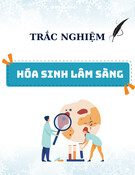
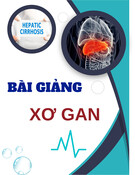
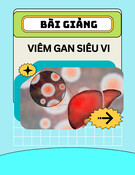

![Ngân hàng câu hỏi lượng giá học phần Kiến thức chuyên ngành tổng hợp Y khoa chính quy [chuẩn nhất]](https://cdn.tailieu.vn/images/document/thumbnail/2025/20251003/kimphuong1001/135x160/45131759466610.jpg)

